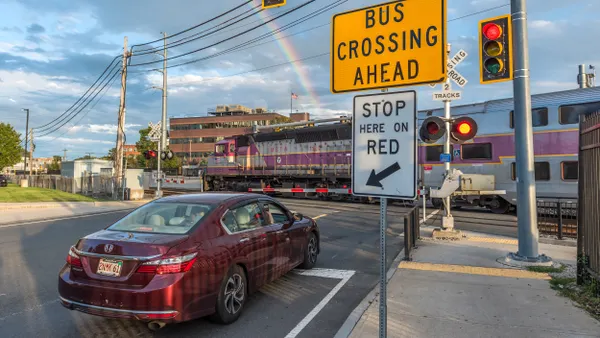St. Joseph County, Indiana, which includes the city of South Bend, is a mix of urban and rural communities. As is the case with many local governments, the county was operating under tight fiscal constraints that left little room for long-term capital commitments. Thus, the county’s highway department opted to retain the vehicles in their 46-unit fleet for as long as possible, waiting until they became inoperable before replacement. Resale values were low, capital expenses were difficult to predict, and half of the fleet’s vehicles were more than 10 years old.
This “run them ‘til the wheels fall off” disposition method is common in the public sector. City, county, and regional authorities often wrestle with how to keep fleet performance high on a public budget. And for many jurisdictions managing fleets in-house, breaking free of the reactive replacement cycle can seem impossible. Yet by rethinking their short- and long-term vehicle needs, fleet managers can often find a flexible, proactive approach that works within the confines of rigid, taxpayer-funded budgets and results in a more modern, reliable and cost-effective fleet.
Flexibility in today’s operating environment comes into sharp relief when considering rising vehicle acquisition and maintenance costs alongside continued inflationary pressures.
Fleet maintenance costs rose 2.6% in Q1 2025 from 2024, continuing their steady climb, according to Automotive Fleet. That’s in part due to a shortage of technicians; one industry observer notes that the technician replacement rate would need to increase 4x to meet current demand. Meanwhile, acquisition costs for new commercial vehicles remain high, and regulatory uncertainty makes their projected path difficult to track.
A Cost-Neutral Fleet Revitalization
As an example of successful fleet transformation, St. Joseph County offers valuable lessons for other local governments – especially against the current macroeconomic backdrop. Knowing their current management strategy wasn’t sustainable, county officials explored out-of-the-box solutions to optimize fleet operations without expending a single extra taxpayer dollar. In doing so, they revolutionized their fleet’s age, safety, performance, and condition by:
- Acquiring more than 40 new vehicles with no budget increase.
- Eliminating 10 under-utilized vehicles to right-size the fleet.
- Increasing fleet fuel efficiency by up to 20%.
The takeaway: Fleet transformation is possible for operators willing to consider new management strategies. Where the county previously had only enough capital to replace five of their aging vehicles, their new strategy allowed them to acquire more than eight times that, dramatically compressing the vehicle lifecycle, lowering fuel expenses and maintenance costs, and limiting vehicle downtime – all while keeping the fleet budget flat for seven years.
In short, a fleet reborn.
“When I think of fleet cost, I think an important piece that often gets overlooked is the cost of doing nothing,” observes Roan Oropesa, Director of Government Marketing for Enterprise Fleet Management. “Maybe you have a very limited capital budget, just enough to replace a couple of vehicles per year. Meanwhile, you may be spending an exorbitant amount on fuel, maintenance and repair, vehicle downtime, and even safety issues to support an aging fleet. Not to mention the loss in resale value. These hidden costs must be factored in to truly understand fleet expense.”
Diversified Sourcing Boosts Fleet Flexibility
If St. Joseph County’s shift in strategy seems too large an undertaking for public entities currently handling all aspects of fleet operations in-house, working with a company that offers full-service management can put dramatic change within reach. It’s the decision the county’s leaders made, enlisting Enterprise’s fleet management division to help guide the transformation. But a complete overhaul isn’t the only solution to the financial pressures public administrators face. For some, simply being open to alternative methods of vehicle acquisition is enough to move the needle.
Where the high, upfront cost to purchase new vehicles can be tough to squeeze into a lean local budget – especially when the need is urgent and unexpected – fleet financing methods such as open- and close-ended leases and even rentals can offer governments much-needed flexibility. In fact, when timing is critical, companies like Enterprise Truck Rental can help public fleets rapidly upsize in response to emergencies and other immediate needs. For seasonal and short-term projects, rentals provide fleet managers with a way to scale operations without risking wasted capital on vehicles that might sit unused once the project is complete.
And unique programs like Enterprise’s Flex-E-Rent – an offering from the company’s truck rental division specifically designed around medium-duty trucks – present a solution that lies somewhere in between, bridging the gap between short-term rental and long-term leases with always-on access, affordable rates, and flexible terms. Companies that offer a wide variety of mobility solutions can help local governments optimize vehicle resources to ensure access to cars, vans, and trucks that meet their needs, whether that’s through buying, leasing, renting, or a combination of all three.
“We research your options so you can make data-driven decisions,” Oropesa says. “If it’s buying or leasing, our long-standing experience and industry relationships can unlock more effective strategies. If you need short-term rentals, we can provide those too. Our breadth of mobility solutions means we’re uniquely positioned to serve the best interests of your department and the public.”
As you weigh next steps in your fleet planning process, keep in mind these factors:
-
Customization. No two situations are alike, so there’s no one-size-fits-all approach to fleet optimization. By prioritizing having access to the vehicles you need only when and where you need them, you can ensure you’re not paying for units that aren’t in use. This means taking into account seasonal swings and being prepared to scale quickly up or down in response to unexpected events. A top-tier partner can offer trusted guidance that is personalized to meet your department’s needs and spending constraints while ensuring your fleet runs as efficiently as possible.
- Prevention. Proactive maintenance and early identification of potential problems can help keep your vehicles running smoothly and reliably, reducing the chances of a sudden breakdown and prolonged vehicle downtime. Insights based on data gathered from your fleet can help you plan ahead. Having ASE-certified technicians available to validate and negotiate service work on your behalf can also help keep costs down. Partnering with the right mobility company can provide all of the above, plus access to a certified network of local maintenance and repair (M&R) shops to avoid extensive nonproductive miles spent traveling for vehicle service.
- Local Presence. Working with local service providers not only affects travel time but can also shorten response time, help rein in spending, and improve communication. With access to rental vehicles that are nearby and ready for service, you can react quickly to unexpected needs. A local partner can be more easily relied on for day-to-day assistance and can meet regularly to finetune strategy and address any changes to your organization’s needs or goals. It’s not uncommon, according to Oropesa, for his team to attend meetings alongside their contacts to offer insights and answer questions to secure approval from decision-making authorities.
- Data-Driven Decision-Making. Real-time vehicle tracking and telematics help you stay on top of your fleet’s operational costs and vehicle usage so your organization can make informed decisions and anticipate needs. Determining when to acquire new vehicles, how to finance those acquisitions, when to schedule maintenance, and whether to invest time in additional driver training are just some of the questions more easily answered when you have data-informed insights available at your fingertips. Companies like Enterprise can ensure your vehicles are equipped to provide such data and offer additional insights to aid in your decision-making.
Enterprise's global scale, local footprint, extensive expertise, and breadth of mobility offerings are critical to giving local governments the flexibility and comprehensive transportation solutions they need to best serve their communities.
To learn more, visit Enterprise.com.










